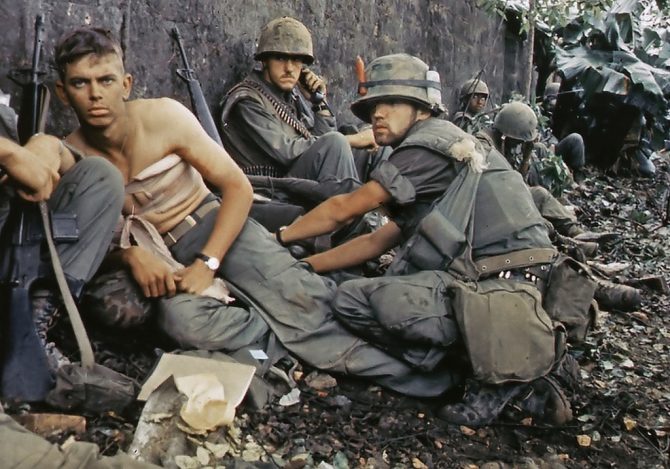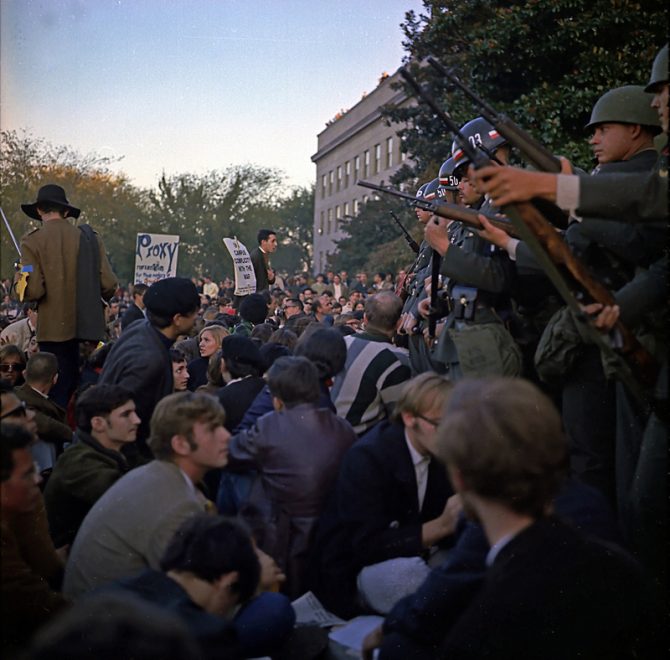The Vietnam War (or the Second Indochina War, Vietnam Conflict) lasted 19 years - 10 being US involvement - and was a complicated conflict that involved numerous bloody and extensive battles, violent homefront protests, and overall, millions of deaths. This timeline covers the major events during the war.
1946: Communists in North Vietnam begin fighting France for the control of the country.
1949: France establishes the State of Vietnam.
1951: Ho Chi Minh becomes the leader of the Vietnam Workers Party.
1954: After the Battle of Dien Bien Phu in May, the Geneva Accords divided the country of Vietnam, ending the French Indochina War. The three successor states include the Kingdom of Laos, the Kingdom of Cambodia, and the Democratic Republic of Vietnam, the new state won by Ho Chi Minh's Viet Minh. The State of Vietnam was shrunk to cover the southern part of the country and is US-supported. This division was intended to be temporary. North Vietnamese Communists begin helping South Vietnamese rebels fight troops, beginning the Vietnam conflict.
1957-1963: The Viet Cong continue to fight the South Vietnamese troops. The US sends more aid and military advisors to help the spread of communism, growing from 900 in 1960 to 11,000 in 1962.
August 2-4, 1964: By 1964 the Viet Cong has 35,000 in South Vietnam. In August, the North Vietnamese fire on a US destroyer anchored in the Gulf of Tonkin. After President Lyndon Johnson claims there had been a second attack on the destroyer (there was not) Congress passed the Gulf of Tonkin Resolution, which allowed the US to enter the war.
August 5, 1964: The US goes to war against the North Vietnamese.
July 1965: President Johnson calls for 50,000 more ground troops, increasing the draft to 35,000 each month.
November 14-18, 1965: US troops fight the first large-scale battle against the Viet Cong in the la Drang Valley. Nearly 300 Americans are killed.
1967: US troops increase to 500,000. Large anti-war protests occur in Washington DC, New York City, and San Francisco.
January 30, 1968: During the Vietnamese New Year ("Tet") the North Vietnamese launch a surprise attack that hits more than 100 cities and outposts in South Vietnam, killing thousands on both sides. American public opinion against the war increases and the number of troops are reduced in Vietnam.
February 11-17, 1968: This week records the highest number of US soldiers deaths during the war with 543.
March 16, 1968: During a campaign of US search-and-destroy operations, 400 unarmed South Vietnamese are massacred by US troops in the village of My Lai.
May 1969: At Ap Bia Mountain, US paratroopers attack entrenched Viet Cong outside of Laos, capturing the site temporarily. It would be nicknamed "Hamburger Hill" by journalists due to the carnage of the 10-day battle.
April-June 1970: President Richard Nixon orders troops to invade border areas in Cambodia to destroy Viet Cong supply centers.
May 4, 1970: At Kent State University during an anti-war demonstration, the National Gaurd fires into a group of college students, killing four and wounding nine others.
June 1970: Congress repeals the Gulf of Tonkin Resolution to control the president's ability to use force in the war. President Nixon announces US troop withdrawal from Vietnam.
January-March 1971: The US and South Vietnamese ground troops, with the help of B-52 bombers, invade Laos in order to stop supply routes.
December 1972: Operation Linebacker is deployed and drops 20,000 tons of bombs over densely populated North Vietnam regions.
January 27, 1973: President Nixon signs the Paris Peace Accords, ending US involvement in the Vietnam war.
March 29, 1973: The last US ground troops leave. Fighting begins again between North and South Vietnam, but the US does not return to help.
April 1975: In the Fall of Saigon, South Vietnam is seized by communist forces. US Marine and Air Force transport more than 1,000 American civilians and nearly 7,000 South Vietnamese refugees in an 18-hour evacuation effort.
Information from cnn.com and history.com.



